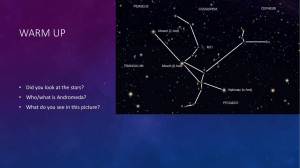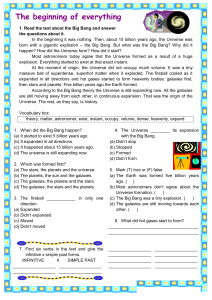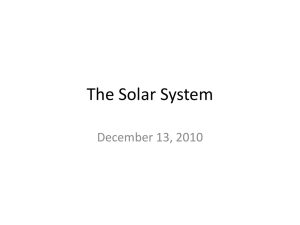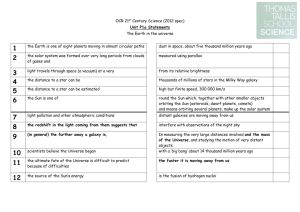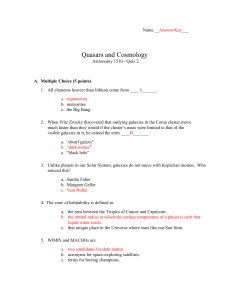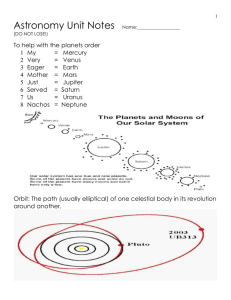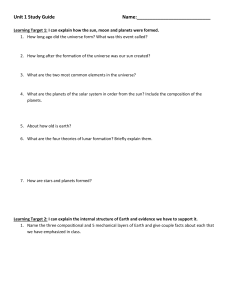Astronomy Noteform 4-5: The Expanding Universe (pages 148 – 152)
advertisement
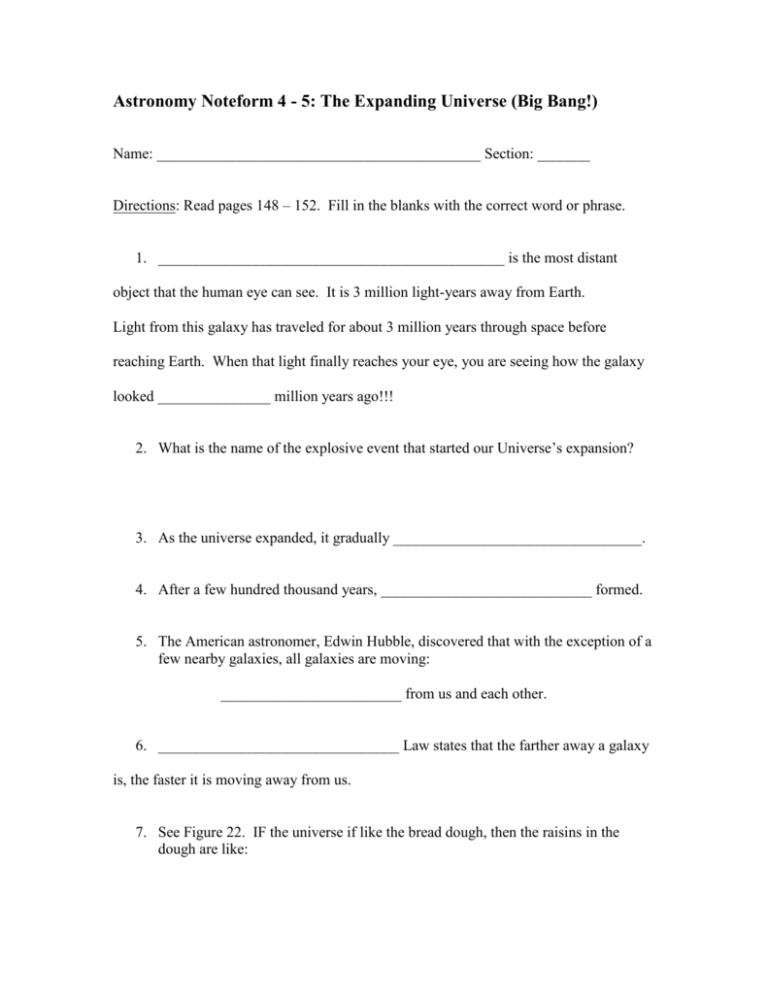
Astronomy Noteform 4 - 5: The Expanding Universe (Big Bang!) Name: ___________________________________________ Section: _______ Directions: Read pages 148 – 152. Fill in the blanks with the correct word or phrase. 1. ______________________________________________ is the most distant object that the human eye can see. It is 3 million light-years away from Earth. Light from this galaxy has traveled for about 3 million years through space before reaching Earth. When that light finally reaches your eye, you are seeing how the galaxy looked _______________ million years ago!!! 2. What is the name of the explosive event that started our Universe’s expansion? 3. As the universe expanded, it gradually _________________________________. 4. After a few hundred thousand years, ____________________________ formed. 5. The American astronomer, Edwin Hubble, discovered that with the exception of a few nearby galaxies, all galaxies are moving: ________________________ from us and each other. 6. ________________________________ Law states that the farther away a galaxy is, the faster it is moving away from us. 7. See Figure 22. IF the universe if like the bread dough, then the raisins in the dough are like: 8. In 1965, two American physicists, Arno Penzial and Robert Wilson, accidentally detected faint radiation on their radio telescope. The mysterious glow was coming from all directions in space. This glow is the leftover thermal (heat) energy from the Big Bang. It is called: ______________________________________________________ 9. Astronomers estimate the the universe is about ______________ billion years old. 10. After the Big Bang, matter in the universe separated into galaxies. Gas and dust spread throughout space. A giant cloud of gas and dust collapsed to form our Solar System about ____________________ billion years ago. 11. What do you call the early building blocks of planets, which collided and grew larger by sticking together, eventually combining to form planets? 12. The ______________________________ planets had high temperatures, so most water and gases evaporated, leaving behind relatively small and rocky planets. 13. The cooler ______________________________ planets grew larger due to gravity and captured hydrogen and helium gases that now surround them in space. 14. New observations lead many astronomers to conclude that the universe will likely expand: __________________________________. 15. __________________________________________ was the astronomer who discovered “dark matter.” Dark matter does not give off electromagnetic radiation. BONUS: What percentage of the universe’s mass is made of dark matter? _____%

